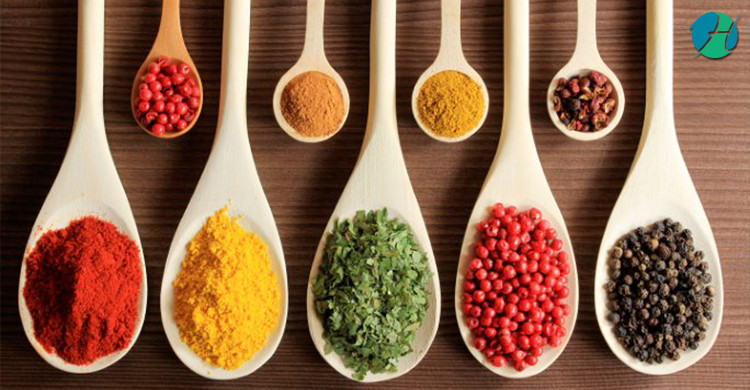The Best Anti-inflammatory Herbs & Spices to Reduce Pain & Inflammation

Millions of Americans suffer from chronic pain each and every day, and it is something that interferes with overall quality of life. Pain is often due to inflammation in the body, and not only can inflammation trigger pain, but inflammation can also lead to chronic disease. It is essential to reduce as much inflammation in the body as possible to not only reduce pain but to also support overall health and wellness.
If you experience some sort of pain-related condition, or can’t quite pinpoint why you have chronic neck or back pain, it may be time to take a look at your diet and see what anti-inflammatory foods you can enjoy.
Here are three anti-inflammatory spices to add to your diet to help you feel your best!
3 Anti-inflammatory Spices to Reduce Pain & Inflammation
#1 Turmeric: Likely one of the most well-known anti-inflammatory spices, turmeric has been found to hold a number of health benefits when it comes to reducing pain and inflammation in the body. In fact, turmeric may be so powerful in reducing pain-related conditions, that it may be able to take the edge of just as well as some pain-relieving medications. Not only that, but some studies have even found it to be beneficial for reducing pain associated with rheumatoid arthritis. (1)
Turmeric can easily be added to the diet in powder form, or you can use whole turmeric root in things like homemade ginger and turmeric juice or added to stir fry dishes. Making a homemade golden milk latte with coconut milk, ground turmeric, and a pinch of cracked black pepper is another excellent way to add this anti-inflammatory spice to your diet.
#2 Ginger: Ginger is another powerful anti-inflammatory spice that may be able to help reduce pain and combat inflammation. Ginger also holds some pretty impressive antioxidant properties and its use has even been studied when it comes to using it to help relieve pain related to osteoarthritis. A study found that ginger may make a great pain-relieving alternative option to NSAID medications. (2) However, not only does ginger holds some great anti-inflammatory and antioxidant benefits, but it is also commonly used to help support various digestive complaints such as nausea and even heartburn.
You can try adding ginger to your diet by adding some ground ginger to brown rice or quinoa bowls or adding a very small amount of fresh ginger to smoothies.
#3 Cayenne Pepper: Cayenne pepper contains capsaicin which is a compound that may be responsible for reducing pain which is why many people use capsaicin cream to help reduce pain associated with different types of aches and pains, and it is also helpful for promoting circulation.
Consuming cayenne pepper may be able to help reduce aches and pains while also giving the body a boost of the nutritional value as it is a rich source of vitamin C and important flavonoids. (3)
The thing with cayenne pepper is that you must like the taste of spicy foods to add this to your diet, and a little goes a long way! You can start by gradually adding this to your diet by adding a pinch of two to a homemade taco seasoning or adding it to a marinade. You may also want to try a topical cream made with capsaicin to see if it can help reduce some of the pain you may be experiencing.
Sometimes the best pain-relieving options are sitting right in your kitchen pantry. Nature holds some pretty amazing pain-relieving options that don’t require the use of pharmaceutical medications. Not only that but oftentimes, pain is associated with inflammation in the body. If you are able to get your inflammation under control with the foods you eat, you may very well experience less pain on a daily basis.
Try adding these anti-inflammatory spices to your diet to see if you can get your inflammation under control and thus experience some pain relief without the use of medication!

